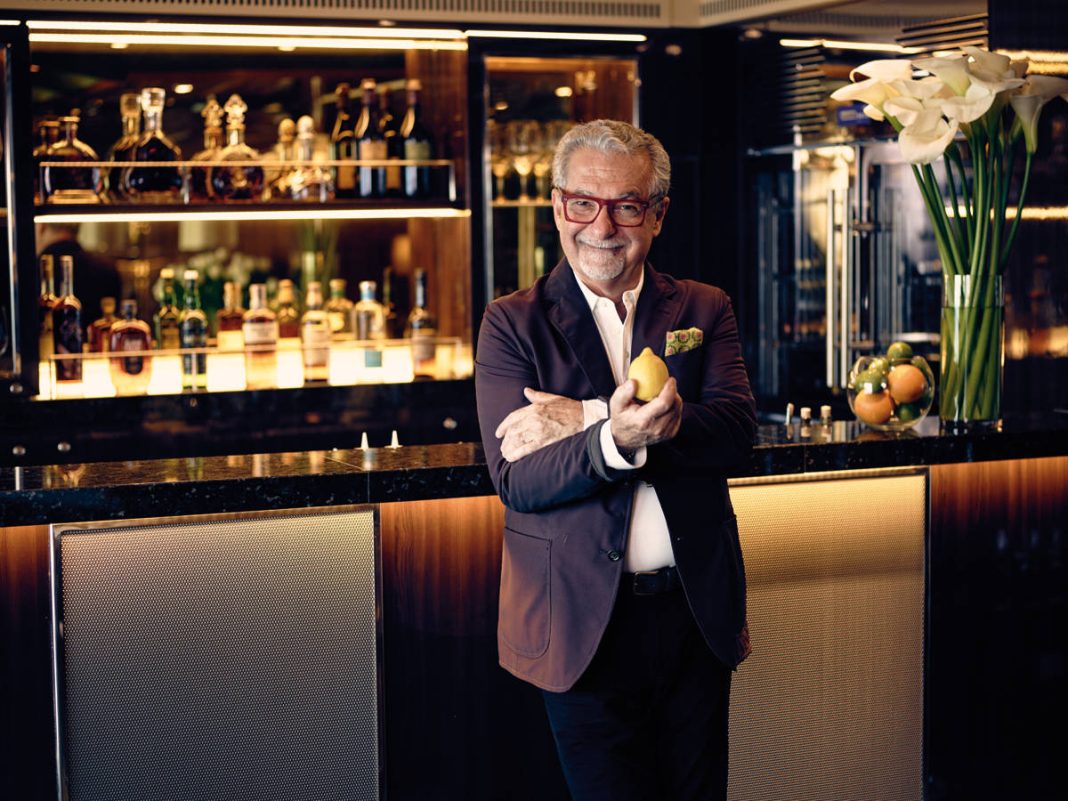Mr. Tihany, let’s start from the beginning. What still brings his period of study at the Politecnico in Milano?
My time in Milan formed my fundamental understanding of design. It taught me the importance of detail, and that successful design captures the essence and the energy of the product, no matter what it might be. I worked with some of the pioneers of contemporary Italian design and learned to see design as an answer to a question. In many ways, I still feel very Italian in what I do.
Then comes to America, why this decision?
While pivotal in my design education, the late 60s and early 70s was a difficult time in Italy. When the opportunity came to work in New York,
I jumped for it. America had always been a dream of mine. Like every Israeli kid, I grew up on Alfred E. Neuman and MAD Magazine and Hugh Hefner and Playboy – they were my icons. I wanted to go where the streets were paved with gold.
The world of the contract, the hospitality above all, seems to travel at a higher speed than that of design: how it changed over the years from your point of view?
The most significant change is in the tools of our trade. What once was dependent on scale and proportions, straight edge rules, compasses, pencil and paper is now run by Google and Pinterest. Everything is so easily copied and pasted, which has severely impacted the originality of the creative process. Now ‘inspiration’ is an image from the Internet before it is an experience.
Your curriculum says that you have a passion for the design of environments for the restaurant business. Correct?
When I came to New York, people would ask me ‘What do you design?’ They wanted to know if I was an architect, product designer, graphic designer or fashion designer. In America, you had to have a specialty to be considered an expert, but I was designer who problem solved across multiple fields – it was how I was taught in Milan. After a few challenging first years in America, I was asked to design a recreation of the legendary Parisian café La Coupole, which would become the first grand café in New York City. The owners were very trusting and allowed me to design not only the interiors, but the uniforms, the graphics- everything. I had found a specialty that allowed me to touch every discipline of the profession I love doing. After the restaurant opened to rave reviews, I ordered a sign that read: Adam D. Tihany – Restaurant Designer and hung it outside my studio door.
How is changed over the years, your approach to the large projects, to name one recent, the latest of Dubai Four Seasons or the Mandarin in Las Vegas? Because the properties have chosen you?
I’ve always approached design – whether for an ashtray or an entire cruise ship – as a solution to a problem. The more challenging, the better. I wake up in the morning and I get excited about the challenges – it is what kicks off my creativity. Restaurants, hotels and now also the ships, is a world apart? A few pages later, Sergio Buttiglieri interior design of Sanlorenzo, has hinted that the long wave of design also comes on the big ships.
What do you think?
The cruise is industry is a hospitality industry. The success of any cruise line relies on one thing: the customer experience. A ship may have the most incredible food and the best service, but if a guest doesn’t feel comfortable, you lose some of the potential for an unforgettable experience. When designing a cruise ship, the greatest challenge – even more daunting than the simple fact that it moves – is that you are designing for a captive audience. Some of these guests will stay onboard for weeks or even months at a time, so the design has to have a lasting appeal to many different kinds of travelers. Ultimately you want the design to elevate the experience and to raise the bar as a hospitality offering. In the case of Seabourn Encore, the curving lines and yacht-inspired details have become so engrained in the identity of the ship that it is almost impossible to talk about Encore without mentioning the design.
What projects are you working on, both as a designer and as interior?
I have been appointed Creative Director for Costa Cruises to oversee the rebranding of the company. I’ll be working with a team of designers and architects I selected to carry out the vision for the next generation of Costa ships, themed ‘Italy’s Finest.’ We’ve also started working on the second ships for both Seabourn and Holland America Line, which are scheduled for completion next year. In the world of product design, we have several projects in the pipeline for Tihany Product Design, which we officially launched last year.









